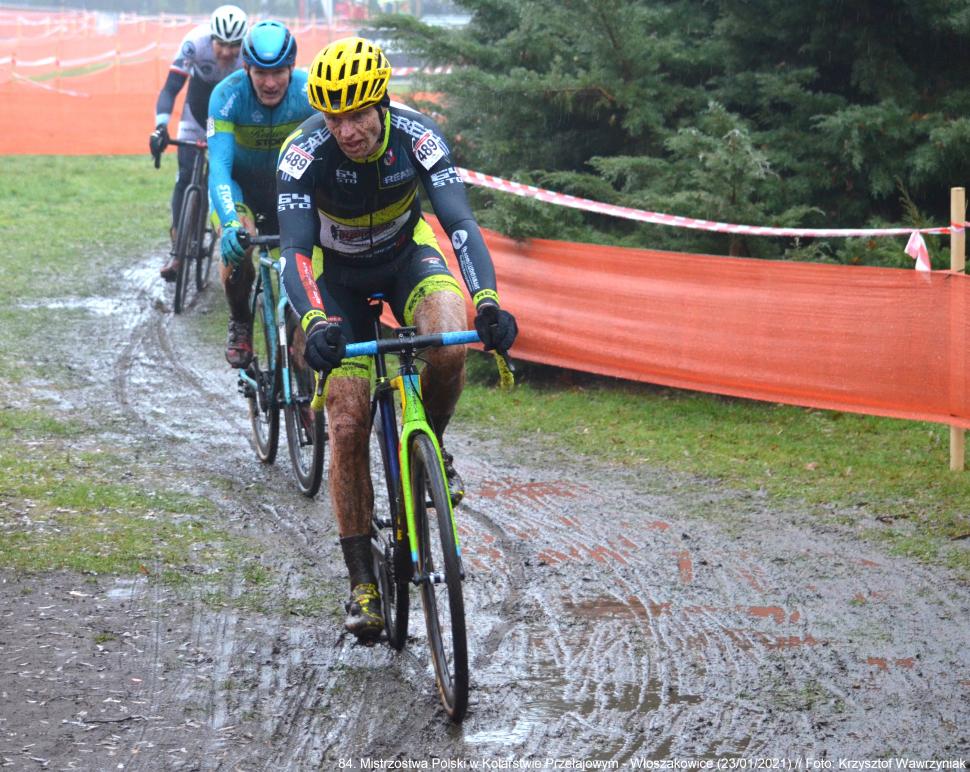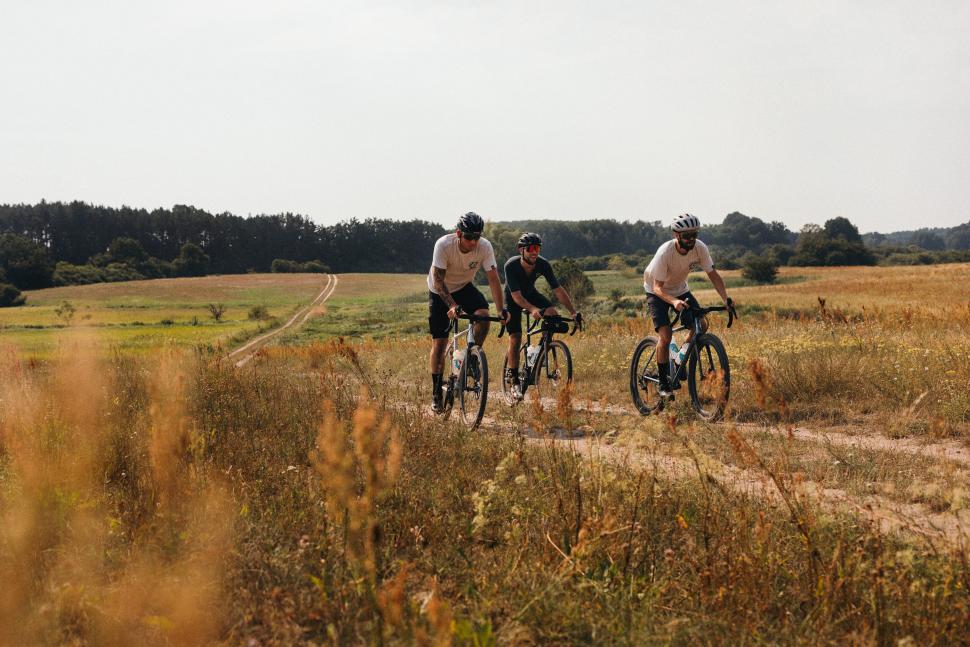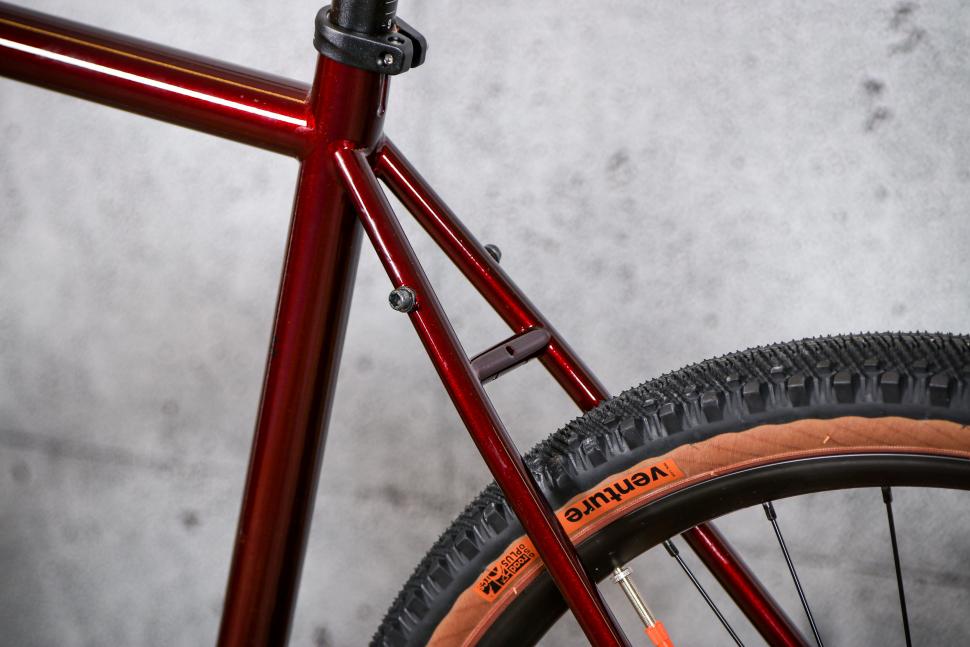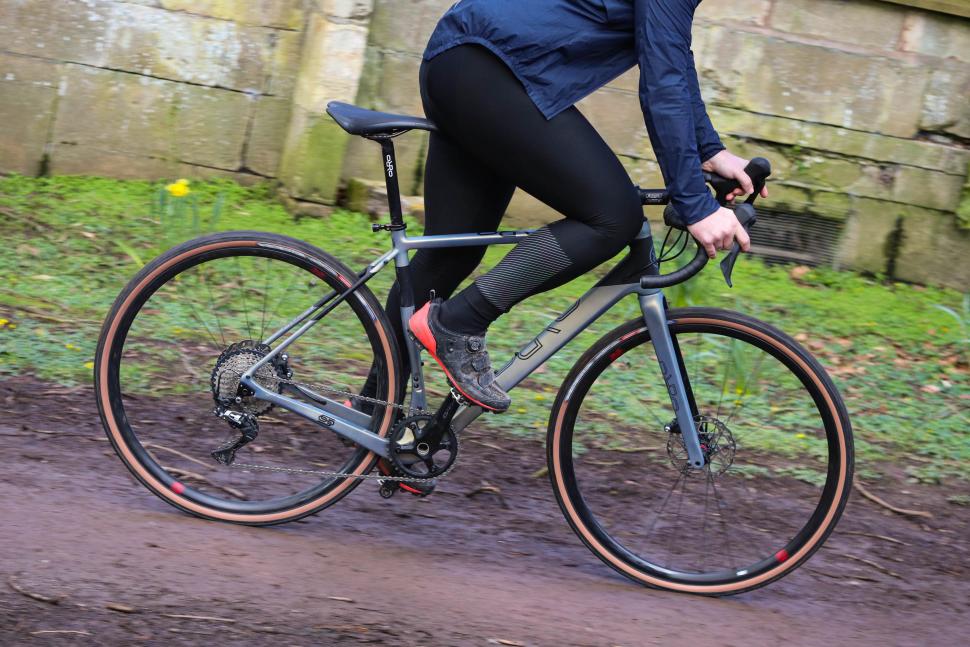- News
- Reviews
- Bikes
- Accessories
- Accessories - misc
- Computer mounts
- Bags
- Bar ends
- Bike bags & cases
- Bottle cages
- Bottles
- Cameras
- Car racks
- Child seats
- Computers
- Glasses
- GPS units
- Helmets
- Lights - front
- Lights - rear
- Lights - sets
- Locks
- Mirrors
- Mudguards
- Racks
- Pumps & CO2 inflators
- Puncture kits
- Reflectives
- Smart watches
- Stands and racks
- Trailers
- Clothing
- Components
- Bar tape & grips
- Bottom brackets
- Brake & gear cables
- Brake & STI levers
- Brake pads & spares
- Brakes
- Cassettes & freewheels
- Chains
- Chainsets & chainrings
- Derailleurs - front
- Derailleurs - rear
- Forks
- Gear levers & shifters
- Groupsets
- Handlebars & extensions
- Headsets
- Hubs
- Inner tubes
- Pedals
- Quick releases & skewers
- Saddles
- Seatposts
- Stems
- Wheels
- Tyres
- Health, fitness and nutrition
- Tools and workshop
- Miscellaneous
- Buyers Guides
- Features
- Forum
- Recommends
- Podcast
BUYER'S GUIDE
 Cyclocross v gravel bikes April 2021
Cyclocross v gravel bikes April 2021Cyclocross v gravel bikes: get to know the clever differences that set them apart
Updated April 25, 2021
What’s the difference between a cyclocross bike and a gravel bike? It’s a question we see asked a lot, as more and more bikes are launched in the gravel bike niche. Let’s try and clear things up.
According to our resident cynic VecchioJo Burt the difference between a cyclocross bike and a gravel bike is “£200”. It’s a bit more complicated than that.
Bike industry labels for bike varieties often confuse people because they usually don’t refer to discrete categories but to points on a spectrum. That means what's labelled a gravel bike can be very similar to a cyclocross bike, especially if you don’t dig deep into the specs.
What are they for?
Form follows function so to kick off, let’s look at what these two bike types are for.
Cyclocross is a bike racing discipline that involves riding a drop-handlebar bike on a short, off-road course, usually in a park or similar. Courses include features like mud, sandpits, barriers and steps or slopes too steep to ride, forcing riders to run, as well as easier sections. An international-grade course has to be between 2.5km and 3.5km long. An elite-level cyclocross race lasts an hour and a lap; other race categories are shorter.
A cyclocross bike is designed specifically for this form of racing, and, as we’ll see, its design serves its purpose of going fast, and being able to be carried when the terrain demands.
>>Read more: Buyer's Guide to cyclocross bikes - how to choose the right one for you
>> Read more: Beginner's guide to cyclo-cross essentials
While there’s an emerging discipline of gravel racing in the USA, most gravel bikes are not purpose-specific racers. Rather they’re designed for long days in the saddle on a mixture of surfaces and terrains and for riding with various types of luggage on multi-day trips.
The key difference between gravel bikes and old-fashioned touring bikes is the baked-in ability to tackle unsurfaced trails, tracks and dirt roads. People took touring bikes off the beaten track in the era before the mountain bike, but fatter tyres make it much easier and more comfortable. A gravel bike combines the multiple hand positions of a road bike with the go-anywhere abilities of a mountain bike.
What design and feature differences come out of these purposes then?
Frames
A cyclocross frame has to be light, because the bike built around it will be carried. That means pared-down aluminium and carbon fibre frames are the norm.
Gravel bike frames are usually a bit heavier, because they need to be stiff enough to carry loads.
A pure cyclocross frame won’t have eyelets for mudguards or racks, because you’ll never need them for racing. But they’re a feature of gravel bikes because you might want to racks to carry luggage, and mudguards to help keep you dry.
A frame’s geometry — the angles and lengths of its various tubes — determines how it handles, and here there are significant differences.
A cyclocross bike will usually have a head tube of around 73° for quick turns, while a gravel bike’s will be a degree or so shallower for steadier handling. And some gravel bikes, like the Fustle Causeway GR1 with it's 69° head tube are heading along the path that's taken mountain bike head tubes down to around 66°.
The riding position is also different, with longer head angles and shorter top tubes on gravel/adventure bikes giving a more upright position.
Out back, a gravel bike will have longer chainstays so there’s heel clearance for panniers. A cyclocross bike typically has 425mm chainstays; on a gravel bike — especially one intended to double as an expedition-touring 'adventure' bike they’re as long as 465mm.
Of course this wouldn’t be the bike industry without glaring exceptions to general rules. Specialized’s carbon fibre Diverge gravel bike has cyclocross-style 425mm chainstays to tuck the back wheel in for more traction on steep climbs.
There are also cyclocross bikes with rack and mudguard eyelets, because bike makers recognise that many riders have picked up ’crossers as fast urban pothole-bashers. Many of these bikes have morphed into gravel bikes or adventure bikes in the last couple of years. The Pinnacle Arkose range from Evans Cycles is a good example. It was originally billed as a cyclocross bike, but now has fatter tyres and Evans calls it an adventure bike.
Read more: Buyer’s guide to gravel and adventure bikes plus 16 of the best
Tyres
The rules set by cycle racing’s governing body, the UCI, say cyclocross tyres have to be no more than 33mm wide. There’s usually room in a cyclocross frame for tyres that are a bit wider than that, and there’s room for mud clearance, but gravel bikes will typically take much bigger tyres. Trek fits 2.0in tyres to its 920 adventure tourer, while Mason's dramatic InSearchOf will take 60mm wide 700C tyres.
However, some, like Cannondale's Topstone bikes, just go a bit fatter with 37mm tyres, while Kona's Rove Ltd has 47mm tyres and 650B wheels, the ‘middle’ size used on mountain bikes. Gravel/adventure bike tyres have definitely got wider in the last couple of years, and that big tread energy has widened the gap between them and cyclocross bikes.
Tubeless-ready wheels are increasingly common on both cyclocross and gravel bikes. Tubeless tyres aren’t susceptible to pinch punctures caused by the tyre bottoming out on the rim — there’s no tube to pinch. They can therefore be run at lower pressures. That means more grip and a comfier ride off road and on.
Gears
Classic cyclocross race gearing combines a 46/36 chainset and a medium-wide cassette like an 11-28. You don’t need the high gears of a road bike because you won’t be zooming downhill at over 40mph, but you still need fairly low gears for climbing the course's more rideable slopes.
Gravel bikes have wider range gearing, but may sacrifice some top end to get lower ratios at the bottom. A 48/31 or 46/30 chainset with an 11-34 cassette is common, and a few bikes widen the range with a 42/28 chainset, or use the ability of the GRX400 derailleur to run an 11-36 cassette. Others go for the simplicity of a single-chainring system with 11, 12 or even 13 rear sprockets.
If you’re an old fart like me, you might be surprised that almost no gravel/adventure bikes have a triple chainset. You could get a bigger range with an extra chainring, but even I have to admit you get a pretty useful range when you combine a 42/28 with an 11-36 cassette.
For workshop tinkerers there are so many reports of 105 and Ultegra GS rear derailleurs and GRX derailleurs for double chainsets shifting fine across 11-40 cassettes that it's now almost a standard recommendation. a 46/30 chainset and 11-40 cassette is a combination you're unlikely ever to see on the start line of an elite cyclocross race.
Brakes
If the UCI hadn’t given the green light in 2010 for cyclocross racers to use disc brakes, the gravel bike category might never have happened — or at least not happened so quickly.
Every gravel bike we can find uses disc brakes. As well as their advantages in stopping power and consistency in the wet, discs have a very big advantage for bikes ridden on lousy surfaces: they’re not affected by rim damage. This is well worth the extra few grams over cantilever brakes.
A tiny handful of cyclocross bikes are still available with cantilever brakes, but cyclocross bikes almost universally use discs too, for much the same reasons.
The big picture
In their purest form cyclocross bikes have a very narrow purpose and that leads to very specific frame design and features. They’re brilliant for cyclocross racing but limited as all-rounders by their lack of provision for mudguards and racks, their relatively narrow gear ranges and inability to take very fat tyres.
For many, the riding position of a pure cyclocross race bike will be too aggressive; fine for an hour and a lap exploring the upper limits of your aerobic range, less ideal for a full day exploring lanes and trails.
Gravel bikes take ideas from cyclocross bikes and throw in fatter tyres from mountain bikes and hybrids, wider gear ranges from touring bikes and all-day riding positions from sportive bikes. The details of the mix vary between manufacturers, but they’re clearly a new, distinctly separate breed.
If you fancy expanding your riding to include dirt roads and trails, but want to get there on the road, the good news is you have plenty of choice. Think about the riding position you prefer, how you’re going to carry luggage — if at all — and the gears you need and take it all into account when you make your choice.
About road.cc Buyer's Guides
The aim of road.cc buyer's guides is to give you the most, authoritative, objective and up-to-date buying advice. We continuously update and republish our guides, checking prices, availability and looking for the best deals.
Our guides include links to websites where you can buy the featured products. Like most sites we make a small amount of money if you buy something after clicking on one of those links. We want you to be happy with what you buy, so we only include a product if we think it's one of the best of its kind.
As far as possible that means recommending equipment that we have actually reviewed, but we also include products that are popular, highly-regarded benchmarks in their categories.
Here's some more information on how road.cc makes money.
You can also find further guides on our sister sites off.road.cc and ebiketips.
road.cc buyer's guides are maintained by the road.cc tech team. Email us with comments, corrections or queries.
John has been writing about bikes and cycling for over 30 years since discovering that people were mug enough to pay him for it rather than expecting him to do an honest day's work.
He was heavily involved in the mountain bike boom of the late 1980s as a racer, team manager and race promoter, and that led to writing for Mountain Biking UK magazine shortly after its inception. He got the gig by phoning up the editor and telling him the magazine was rubbish and he could do better. Rather than telling him to get lost, MBUK editor Tym Manley called John’s bluff and the rest is history.
Since then he has worked on MTB Pro magazine and was editor of Maximum Mountain Bike and Australian Mountain Bike magazines, before switching to the web in 2000 to work for CyclingNews.com. Along with road.cc founder Tony Farrelly, John was on the launch team for BikeRadar.com and subsequently became editor in chief of Future Publishing’s group of cycling magazines and websites, including Cycling Plus, MBUK, What Mountain Bike and Procycling.
John has also written for Cyclist magazine, edited the BikeMagic website and was founding editor of TotalWomensCycling.com before handing over to someone far more representative of the site's main audience.
He joined road.cc in 2013. He lives in Cambridge where the lack of hills is more than made up for by the headwinds.
Latest Comments
- john_smith 5 min 37 sec ago
"a speeding car would have generated a force way in excess of what a 1" piece of polystyrene can protect from and his head hit a kerb"...
- sheridan 37 min 44 sec ago
They're not just driving on the cycle lane - I saw school kids having to walk on the closed-off road to get out of the way of the pavement drivers...
- dave atkinson 1 hour 11 min ago
i've run a manual update this morning so everyone that's a subscriber should be able to access the game ok, let me know if not!
- OldRidgeback 1 hour 34 min ago
Yes indeed, 89 was a great year for music and it was good to hear so many excellent tracks being played. I listen to R6 a lot.
- brooksby 1 hour 40 min ago
Bus driver who killed two women after accelerating instead of braking spared jail...
- kinderje 2 hours 28 min ago
Have you tried Garmin customer service? My charging door woudn't close properly and would shake loose on every ride. A call to Garmin and they put...
- Pot00000000 2 hours 41 min ago
That's a great looking bike. Shame it's a Bianchi
- Ride On 12 hours 10 min ago
I ended up using Parcelforce - paying online and printing off a sticker - then drop off at the post office. I came across a couple of things worth...
- Rendel Harris 12 hours 17 min ago
Reckless doesn't exist as a charge in the UK, it's either careless or dangerous.









Add new comment
42 comments
.. multipost
It's a great idea! A few years ago, in search of "one bike for everything", I bought a CX bike with two sets of wheels: With the skinny tyres and a closely-spaced cassette it does an almost perfect impersonation of a road bike; and with fat tyres and a wide cassette it's good on trails and bridleways, mud and gravel. Only takes a minute to change over. One of the few bike purchases that I never regretted.
Ditto.
I got a Pickenflick 18 months ago with a compact groupset which looking back on it was a bargain at £1,500. Hardly ever use either my MTB or full road bike, just swap the tyres according to what I'm doing. It's the best bike I've ever had and with a Ti frame rides wonderfully and will last me until the day I die, albeit with a few rebuilds.
I love it when people complain about being given more choice
Bring it on, I say. There's nothing that says you have to have one of each - what it does mean that there's a bike that almost certainly meets all of your needs - that's not "marketing nonsense" or whatever other complaint people want to make - it's called "consumer choice" and I love it.
I was thinking just that. I could similarly complain that "mountain bike" is a really vague term. It is, and we're better off for it. The similarly enormous variety in the gravel sector is one of the things that makes it exciting. The bike you want is probably out there!
The similarly enormous variety in the gravel sector is one of the things that makes it exciting. The bike you want is probably out there!
IMHO, the most important point raised in this article is that crossers are narrowly focussed (would they even exist if it weren't for the UCI rules?). I mistakenly bought one when I believed Charlie the Bikemonger's assertion that it woiuld be the perfect thing for the Gravel Dash. It really wasn't (I really should've done my homework). In fact, about the only thing I admire about it is its unerring singlemindedness! YMMV, natch.
Also, beware that a 40C tyre is (a) not that big these days and (b) might leave you with no useful muck clearance if squeezed into a cross frame.
Happy ending: it is now attached to my turbo, and currently ranks as my #1 go-to bike.
I have both and have done cx races on both. The difference is in the handling in the tight turns.
I bought a Ridley x-Bow 1317A Cyclocross bike from Wiggle for £675 a few years ago for commuting its been really good. The only thing that bugged me a bit was the brake wear (it has TRP CX9s) because for year round commuting and being 90 Kilos I trash wheels like they are going out of fashion - it is a quick bike though.
Last week I bought a GT Grade in the Chain Reaction Sale (£649, less British cycling discount and Quidco, it worked out a ridiculously cheap £570-ish), so now I have a Gravel bike to compare it to,
My experience has been that the Cyclocross is much more "twitchy", around corners and on long downhills, still fun to ride on a commute though, its a good blast. The brakes are quite "on-off" though. You feel as though you are sat "on top" of the bike.
The GT Grade is completely different handling, much more like a road bike. You feel sat "in" the frame. It has a long wheelbase, compared to the Ridley and vs my other road bikes. Previous hills that I would hesitate to descend on I can now do much quicker, with no issues, without really trying. It is a monster at descending. The brake discs are TRP Spyres and are much more forgiving of over cooking it into a corner.
I used to think the Cyclocross bike was the answer to "the one bike that can do it all", but its not, its the Gravel bike.
Many bikes, very few differences. Marketing tells you that you need a slightly longer wheelbase or a higher BB shell. They tell you you need 2mm more clearance or you cages need to be positioned higher. You know what you need? Skills. That comes with time and practice. Most bikes will do most things and I can see (breaking the V 12 rule) that 3 bikes would accomplish most things for most folks but if you wanted to believe the indutry they would have you with 7-9.
What are those three?
1. Road
2. Mtb
3. Something in between. Just how in between is up to you, your style of riding and local geography.
Yes, most bikes will do most things quite happily (within reason), but a slight variation can make a big difference to your enjoyment.
I have a hardtail and a full sus mountain bike. Why? because I can flick the hardtail around a bit more as it responds to my commands pretty much instantly, but I get beaton up on it a lot more, while the full sus gives me more confidance when it comes to throwing the bike down drops etc, and it's less fatiguing.
I also have two road bikes - one a typical road bike with aero ish wheels and fairly agressive position, the other essentially a cross bike set-up for road because it has a slightly less agressive position, bigger tyres and mudgaurds. The road bike is more flickable and faster, the cross bike more relaxed and comfortable. On a 70 mile loop I sometime do there will only be 20 mins or so difference between the two, but the different bikes give me a different take on the same ride. This I value enough to own the two bikes.
Do I need two road bikes and two mountain bikes, absolutely not, but I enjoy have them and the different riding options/styles they offer me.
So for all the different genres and niches that are being pushed right now is a bastard for anyone new to bikes or for the stores trying to explain stuff to customers, but it's great for people like me who appreciate the subtlties of bike design how a small change can have a big effect.
Yup. I'm a happy bunny this evening. I just got 9th overall on a Strava segment. I was aiming to match my e-bike on a shortish hill and got a good run at it. That is with a 1986 steel Raleigh racing bike. That's at the end of a day that involved 2 jobs and a ride into Brighton in the morning because it was close ans I felt like it (contract work that lets you cycle around a lot is fun). I'm pretty sure that the rest of the top 10 didn't get that kind of speed on a £20 bike (OK with maybe a couple of upgrades) with 2Kg of locks on them.
Most of it is practice. I'll happily take that bike down muddy trails as well, even with the current 25mm tyres on it.
Way too many labels are marketing nonsense. I ride various mountain bikes on all kinds of terrain without any issue, they're not not 'all mountain bikes' or whatever category comes out this week. As for gravel bikes, tested a few of them and bought a CX bike and ride it even with 28mm tubeless road tyres in the rocky and technical Dark Peak and have one my fastest times down a local Roman Road on that same bike with 32mm near slicks. Left most of those on full sus MTB bikes for dead on one ride and was only 0.7% slower than when riding a full sus 29ner that cost 3 times as much. It has sensible gearing too, 50/34 - 11/32. Thought about putting 40mm Nanos on it to make it a 'gravel' bike, but it's so very competent with skinnier tyres and sensible pressures that tubeless allows, I've not bothered yet. Maybe when I get a third wheelset for it I'll add a pair of them just because.
The other bikes hardly get used any more, as this is very quick on road and makes the boring off road section [fire roads etc] fun and the fun bit even more fun! So as MTB rides from home invariably have road sections and road rides have a habit of wandering off [the actually really rough in places] tarmac this is as close to the the one bike to do it all as you can get. With one little exception. It's a Specialised Crux, so to empahasise it's for racing there are no mudguard eyelets which are actually really handy for keeping the crap off you in Winter or British Summers for that matter. Something discretely present on most of the rival bikes, which didn't ride or fit as well, so I had to make that compromise.
Get the Nanos, they're a riot to thrash around on.
Pages